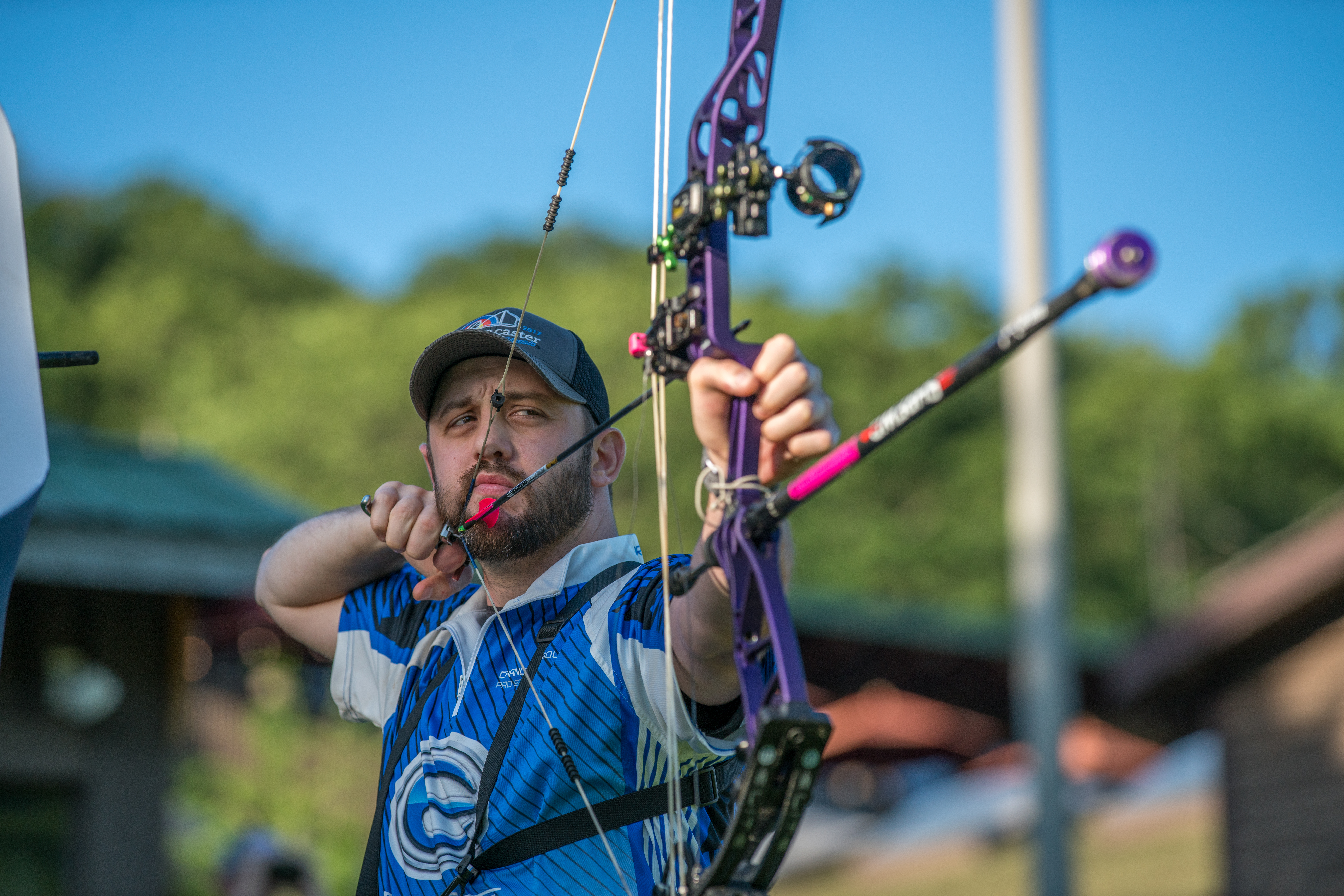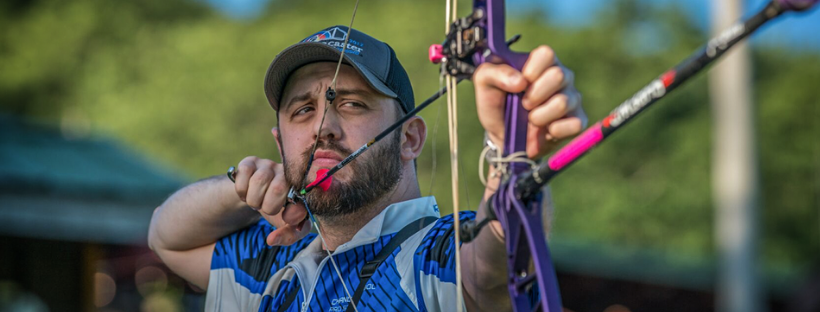
He has more than 35 national wins under his belt with a bowhunting career to match - so you can bet Elite Archery's Chance Beaubouef has seen it all, including target panic. We asked Chance to weigh in on the topic and share what he thinks is the root cause of this all-too-common problem, and more importantly: how to solve it.
***
One of the most common questions I get whether it be at tournaments or on social media is, “what is target panic and how do I know if I have it?”
The honest answer is, if you think you have target panic, you probably do.
And it's more common than shooters would like to think. There are thousands of different types of target panic, and since I shoot a lot of tournaments and spend more time than most at the range and watching others shoot, I see the signs of target panic on a daily basis. Whether it be at a local shoot on the weekend, or watching people shoot the practice bales at a national event. I can’t help but feel sorry for people struggling with their shooting and the ability to execute a good shot without having the feeling of anxiety or even being able to get the pin on target.
There are so many people out there that have lost the enjoyment of shooting because of target panic and been driven to quit shooting all together. Having gone through it myself, I have personally felt the struggle and the pain that target panic can cause.
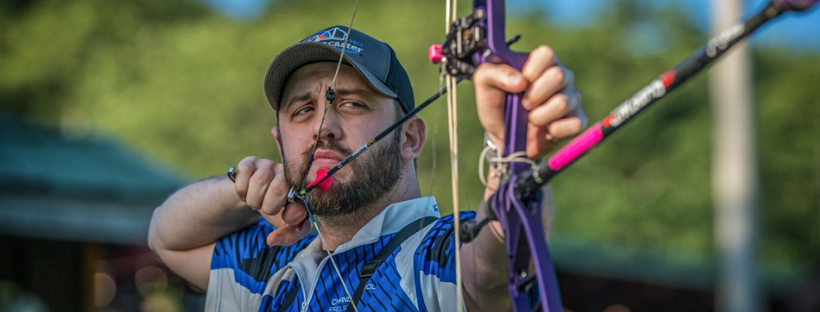
While there are many types, causes and symptoms of target panic, I do believe they all stem from the same source. I truly believe that target panic is caused from not learning how to properly create a shot process and execute a shot. Target panic is a glitch in your shot that over time gradually gets worse and worse: high anxiety moments can cause it to show up worse than other times just shooting in the back yard. Anytime you put a value on the arrows you are shooting it can cause flaws in your shot to become more evident.
Most people I talk to and try to help with target panic want a quick fix. But with most habits developed over time, the solution or path forward also involves a time investment. Whether it be punching the trigger or aiming just off what they want to hit so they can see the intended target, or some other glitch that they have created, these are habits that people reinforce over years of shooting and just can’t be broken in a couple of weeks.
To truly overcome target panic you’re going to have to start from scratch.
You’re going to have to build a better foundation so that you have something stronger you can rely on mentally when you do have times of anxiety and pressure. During these high stress moments you’re going to need a shot process and form of execution that is bulletproof. I think that if you do this correctly and take the proper steps to start from scratch, it will take roughly a year to be really confident in your new shot process.
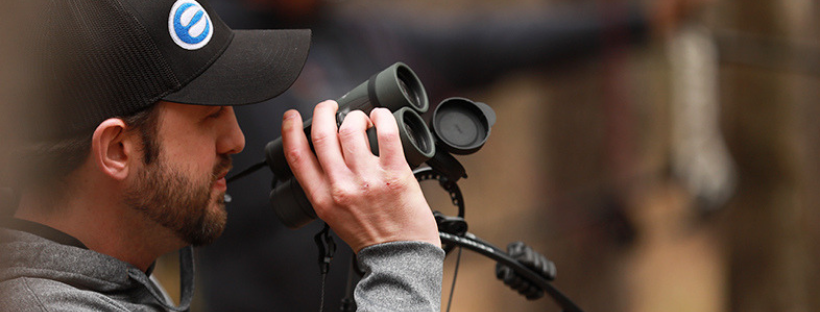
Fixing target panic is definitely going to be a battle, but it is one that is worth the time and effort. Once you overcome target panic you will be mentally stronger and you will see huge improvements in your shooting and consistency.
I believe the best way to begin fixing target panic is to start up close, about 3-5 yards from the target. You’re going to need to completely start over with your shot process and learning what a good shot feels like. Close your eyes and practice some blank/blind bale shooting as often as possible.
Practicing with some sort of hinge release is another great step to help learn how to execute your shot properly.
Any type of release with a trigger doesn’t give you the same type of feedback when you make a bad shot. Right now I'm shooting the Scott Archery Ascent, but the Scott Advantage or Longhorn would be great releases to try as well.
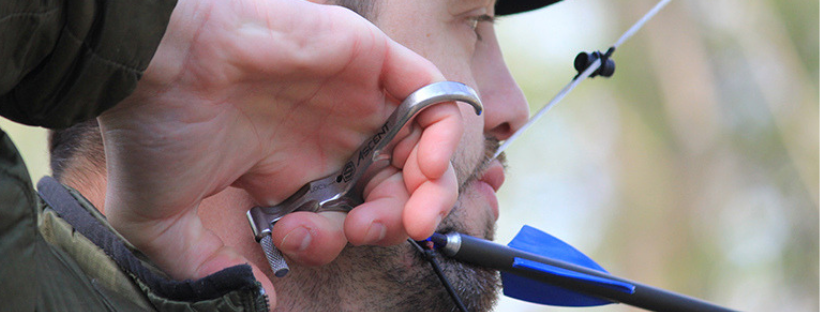
I would set the hinge release very hard, almost to the point to where it will NOT fire (check out this video with Pro Staffer Tommy Gomez on adjusting the Scott Ascent). Doing this will help you learn how to handle the release properly and safely. It will also help you to become familiar with it and feel the release moving while up close. Feeling the release move is a good thing, the movement while up close will help to kill the anxiety of the release.
Any type of release that you shoot, whether it is a hinge, button, or a wrist strap with a trigger should be fired subconsciously when everything is working like it should.
Once you get to full draw, there should be a conscious effort to begin the release process, but then your conscious mind should be occupied with aiming. When working up close I would begin with a blank bale, or if you have a target large enough with your eyes closed. You want to feel the release and let it surprise you without the distraction of aiming. It is going to take some time to build a new shot process that you are mentally comfortable with.
After having spent weeks up close blank baling and getting mentally comfortable with the feeling of a new shot process, I would start to use a target. Implementing a target and getting your mind used to seeing your sight pin in the middle without the feeling of anxiety is your next achievable goal. All of this should still be done up close to the target at 3-5 yards. You need to retrain your mind so that you are mentally comfortable seeing your pin in the middle and being able to execute without anxiety. For the first week or so I would suggest having my sight set way off target so that you aren’t paying attention to score and can just focus on execution.
If you take your time alternating between blank baling and this aiming drill, gradually moving back in distance once you feel you can execute without having anxiety, taking these steps should help cure the target panic. The biggest part of all of it is being honest with yourself and taking the time to fully cure it before taking the next steps back.
There is no easy cure and no magic pill for target panic.
If you want to cure target panic it is going to take time, hard work, and starting over with your shooting and relearning.
Don’t be afraid to ask for help. In our social media world there are a lot of very knowledgeable people that are willing to help. There are also many videos and great information on YouTube.
Just know that if you want to overcome it bad enough, you can!

